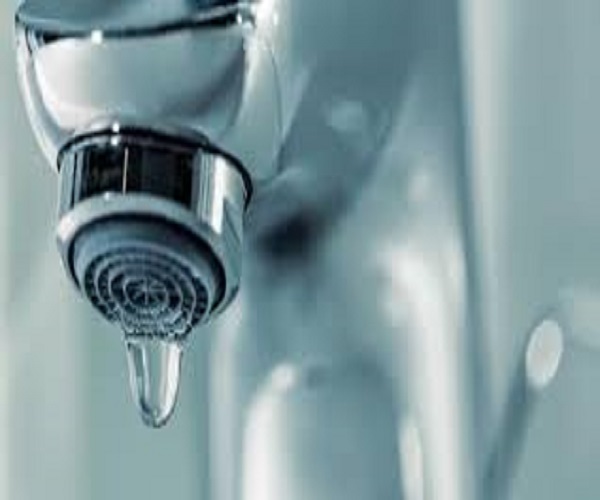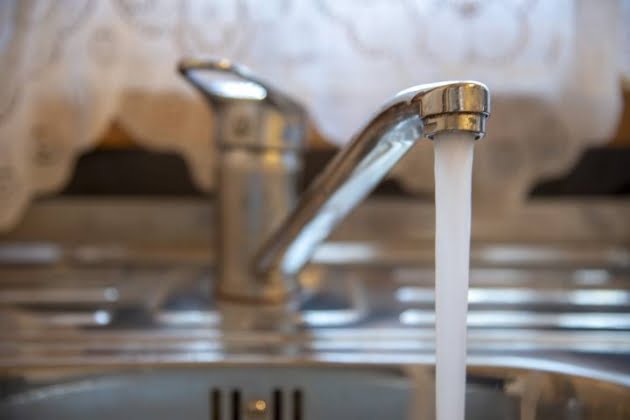The author is making several good points relating to How to Fix a Leaky Faucet as a whole in the content underneath.

Intro
A dripping tap might feel like a small aggravation, but its consequences prolong far beyond the occasional drip. Understanding the effects of a leaky faucet is essential for both property owners and the environment. In this short article, we'll explore the various impacts of this usual family problem and why addressing it quickly is important.
Causes of Leaky Faucets
Dripping taps can result from a range of factors, consisting of deterioration, high water stress, and rust. In time, the consistent use of taps can cause worn-out seals and gaskets, triggering leaks to establish. In addition, extreme water stress can put pressure on plumbing fixtures, leading to leaks. Deterioration and corrosion can additionally deteriorate tap components, making them susceptible to leak.
Water Wastage
Among one of the most significant repercussions of a dripping tap is water wastage. Even a little drip can amount to gallons of drainage over time. This not only drives up water costs but also contributes to water shortage and ecological deterioration. Resolving dripping taps promptly is crucial for conserving this precious resource and minimizing its impact on the planet.
Financial Influence
Along with drainage, dripping taps can additionally have a substantial monetary effect. Enhanced water bills are a straight effect of water waste, costing property owners thousands of bucks yearly. Furthermore, the price of fixing water damage brought on by leaks can be substantial, specifically if left unattended for an extensive duration.
Environmental Impact
The ecological impact of leaking faucets prolongs beyond water waste. By conserving water, house owners can contribute to wider initiatives to mitigate water shortage and protect natural ecological communities. Sustainable options such as rain harvesting and water-efficient fixtures can even more minimize the environmental impact of house water use.
Technological Solutions
Developments in innovation have actually brought about the development of smart faucets and water-saving devices that help reduce water waste. Smart faucets utilize sensors to discover movement and change water circulation as necessary, reducing waste without sacrificing ease. Water-saving tools such as aerators and low-flow showerheads are also reliable in preserving water without jeopardizing performance.
Global Perspectives
While dripping taps may appear like a localized issue, they add to wider global obstacles such as water shortage and environment modification. In regions currently facing water anxiety, every drop counts, making leakage prevention and repair service vital. By taking on water-saving methods and buying sustainable innovations, homeowners can play their part in resolving these pressing worldwide issues.
Regulative Actions
Government policies play a critical role in reducing the effect of dripping taps and advertising water preservation. From building codes that require water-efficient fixtures to water-saving incentives and refunds, policymakers have a variety of tools at their disposal. By carrying out and implementing these guidelines, federal governments can make sure that house owners focus on water preservation in their every day lives.
Neighborhood Effect
Dealing with leaky taps calls for collective efforts at the area degree. By increasing awareness concerning the value of water conservation and giving sources for leak discovery and repair work, local authorities can encourage property owners to do something about it. Efforts such as water-saving rebate programs and leakage detection projects can incentivize behavior adjustment and promote accountable water use.
Situation Researches
Real-life examples of the effect of dripping faucets highlight the importance of positive upkeep and prompt repair work. From water damages to increasing water bills, the repercussions of neglecting leakages can be severe. By sharing these case studies, home owners can better understand the importance of attending to dripping taps without delay.
Educational Campaigns
Educational projects play a crucial role in raising awareness about the effects of leaky taps and advertising water preservation techniques. With workshops, seminars, and online resources, homeowners can find out exactly how to discover and repair leaks themselves. By encouraging people with understanding and tools, instructional campaigns can foster a society of accountable water usage within areas.
Health and wellness Issues
Dripping faucets can create favorable environments for mold and mildew and mildew growth, posturing health and wellness threats to residents. The visibility of mold can aggravate breathing concerns and allergies, especially in vulnerable individuals. In addition, water damage resulting from leakages can endanger the structural stability of structures and lead to expensive repair services.
Do it yourself vs. Professional Repair work
When confronted with a leaky faucet, property owners commonly question whether to try repairs themselves or hire an expert plumber. While DIY repairs can save cash, they may not always resolve the underlying issue properly. Expert plumbers have the knowledge and devices to identify and repair leaks appropriately, making certain lasting options and assurance for property owners.
Preventive Measures
Protecting against leaking faucets calls for routine maintenance and aggressive steps. Simple jobs such as replacing worn-out washing machines and seals can prevent leakages from developing. In addition, upgrading to high-grade fixtures and lowering water pressure can assist prolong the life expectancy of taps and minimize the danger of leakages.
Conclusion
To conclude, the results of a leaky tap expand much beyond the occasional drip. From water wastefulness and raised water bills to wellness concerns and environmental effect, the effects of ignoring leaks can be significant. By dealing with leaking faucets immediately and taking on water-saving techniques, home owners can minimize these results and add to an extra lasting future.
Why You Shouldn’t Ignore a Leaky Faucet in Your Home
What Causes a Leaky Faucet?
Various factors can cause a leak, from loose and worn-out parts to corrosion. Your faucet has four essential components from which most plumbing issues will stem: the O-ring, the valve seat, the washer and the gasket.
What Is an O-Ring?
The O-ring is a stem screw that fastens parts of the faucet in place, preventing water from leaking out of the spout. Depending on your faucet type, the stem might have multiple O-rings. Water will drip from the faucet’s handles and base if this part breaks or deteriorates.
What Is a Valve Seat?
The valve seat controls the flow and temperature of the water. Found at the base of the handle, it works as a seal for the faucet’s stem. The valve seat ensures the water is allowed to flow or is blocked as the handles dictate. You’ll know it’s malfunctioning when water leaks from your faucet’s sides.
What Is a Gasket?
The gasket is found between the water inlet and the valve stem. It creates a seal between the faucet and the sink, holding its joints by aerators attached to the stem’s head. Water will trickle out from the base if the gasket isn’t working.
What Is a Washer?
The washer secures the handles and prevents leakage, serving a similar purpose to the O-ring. While the O-ring is ordinarily round and made from an elastic material, such as rubber, the washer is square-shaped and composed of brass, copper and other hard metals. If it malfunctions, corrodes or has been improperly installed, water will leak out of the handles, causing that incessant faucet drip.
Why Is a Leaky Faucet Dangerous?
A leaky faucet left alone for too long can have significant consequences.
Pest Infestations
Since bugs and rodents gravitate towards the scent of water, a leaky faucet will draw pests to your sink. Both are looking for leaks accessible through crawl spaces, which a faucet provides. If you leave water dripping for too long, you run the risk of an infestation.
Rust
If one of the faucet parts has started to corrode, the resulting rust can spread to your pipes and valves with startling speed. The rust might even lead to cracks or other impairments, resulting in more severe plumbing issues.
Your sink could also sustain damage from a leaky faucet. The water in your tap possesses sparse elements of calcium and iron that can stain your sink with repeated and prolonged exposure. Once those elements in the water have been open to the air for some time, your sink will start to rust, creating marks that can be difficult to remove.
https://www.tomsmechanical.com/blog/why-you-shouldnt-ignore-a-leaky-faucet-in-your-home

We had been shown that editorial about Here's How to Fix a Leaky Faucet through a friend on our other domain. Sharing is nice. Helping people is fun. Thanks a bunch for being here. Don't hesitate to stop by our blog back soon.